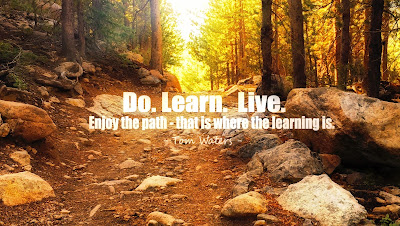Accidental Diminishers, 6 Types for Self-Reflection
In this post, I'll share with you 6 types of accidental diminishers:
- The Optimist
- The Rapid Responder
- The Pace-Setter
- The Rescuer
- The Idea Guy
- Always On
Marci Houseman shared the graphic below on Twitter, and I thought it would be perfect to share with you.
"Being a multiplier means being aware of those times when we have a tendency to be an accidental diminisher. To build capacity we must provide others with the opportunity to learn and grow—even if something is done “differently” than we would have done it."
The Optimist
Being an optimist is a strength, and it's much needed. However, the strength comes with a flipside, it can be perceived as lacking empathy.
Beware of this blindspot.
Those in the trenches working the daily struggles may perceive optimism as "out of touch". Your optimism can actually unintentionally diminish their struggles and challenges.
Beware of this blindspot.
Those in the trenches working the daily struggles may perceive optimism as "out of touch". Your optimism can actually unintentionally diminish their struggles and challenges.
"It's important for leaders to have the skin of an armadillo, but the heart of a marshmallow."
The Rapid Responder
The need for efficiency is real. The rapid responder understands this need and pushes to get there. Often she is the innovator. Or he is gifted in finding solutions. However, there are ways this can accidentally diminish.
Friction is created when the rapid responder moves faster than the organization. People are dealing with problems that slow their work. Or there are too many changes at once.
"For someone to carry the baton, they need to be a part of the journey and have shared ownership of the vision. Trust has to be cultivated through authentic relationships. Broken trust = people stepping back from contributing rather than stepping forward."
The Pace-Setter
The pace-setter is pushing the organization or team to reach goals and move toward high standards. Often their drive for success is their biggest strength. But it can also accidentally diminish the intelligence of others by:
- Creating spectators.
- Alienating team members who aren't as fast to move.
- People give up if they can't match the standard.
"Empowering Leaders create opportunities for Ps & Ts to lead knowing they may fall short but prepared to pick them up and equip. Failure can hinder if it isn’t viewed as part of the process of resilience and building capacity!"
 |
| Pin Me! |
The Rescuer
The rescuer is driven by their desires to care for, protect, and ensure the success of their people. These are incredible strengths but can have unintended side effects.
It can create dependence. Or worse, it can create hesitation. These are the lessons we learned from the Seagull.
"The popular thing is not always the right thing, and legacy leaving leaders are not concerned with what’s popular. They focus on what is best for children. They focus on building capacity within their group, rather than quick fixes that get short-term results."
The Idea Guy
This leader is a creator and a big thinker. The strengths allow this person to excel at planning and strategizing.
If not careful, this leader can overwhelm people with ideas that are too big or too many. Worse is if there's a constant chasing of new ideas without really digging in and focusing on a manageable few.
"To help prioritize all that needs to be done, we run new initiatives through these questions:
1) Does it align with our mission?
2) How many resources will it take?
3) How much risk is involved?
4) How much time will it take?"
Always On
If people begin to tune you out, then this might be you. You have energy. You're ready and willing at all times to tackle the task. Your energy is infectious, and your point of view is well-articulated.However, many people can need their own mental space. They respond by shutting down and tuning out your great ideas.
"I'm sure other people are going to share some profound strategies. Mine is pretty simple...and pretty hard: Really try to shut up and let other people talk."
Get More Insights from the Book
Multipliers: How the Best Leaders Make Everyone Smarter
by Lis Wiseman
"We've all had experience with two dramatically different types of leaders. The first type drain intelligence, energy, and capability from the ones around them and always need to be the smartest ones in the room. These are the idea killers, the energy sappers, the diminishers of talent and commitment. On the other side of the spectrum are leaders who use their intelligence to amplify the smarts and capabilities of the people around them. When these leaders walk into a room, lightbulbs go off over people's heads, ideas flow, and problems get solved. These are the leaders who inspire employees to stretch themselves to deliver results that surpass expectations. These are the Multipliers. And the world needs more of them, especially now, when leaders are expected to do more with less."
Preview the book here on Amazon.




exciting ideas and common to my friend and me in our non-profit meetings
ReplyDeleteGreat ideas!
DeleteThis article on Accidental Diminishers is truly insightful! It’s fascinating how certain leadership habits, even with good intentions, can unintentionally limit team growth. The six types you mentioned offer great points for self-reflection and personal development. I recently came across similar ideas while researching for a leadership project, and having the right resources really made a difference. I even used an assignment maker tool to structure my thoughts more clearly—it helped me analyze my communication style better!
ReplyDelete